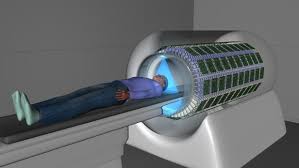
Breaking News
 Will 'Peace' In Ukraine Also Bring a New Détente?
Will 'Peace' In Ukraine Also Bring a New Détente?
 Trump Says US Willing To Provide Security Guarantees For Ukraine In Zelensky Meeting
Trump Says US Willing To Provide Security Guarantees For Ukraine In Zelensky Meeting
 Another Reason to Ban Tik-Tok?
Another Reason to Ban Tik-Tok?
 President Trump -- Come Home From Ukraine -- Promote Freedom In America
President Trump -- Come Home From Ukraine -- Promote Freedom In America
Top Tech News
 Chinese Scientists Produce 'Impossible' Steel to Line Nuclear Fusion Reactors in Major Break
Chinese Scientists Produce 'Impossible' Steel to Line Nuclear Fusion Reactors in Major Break
 1,000 miles: EV range world record demolished ... by a pickup truck
1,000 miles: EV range world record demolished ... by a pickup truck
 Fermented Stevia Extract Kills Pancreatic Cancer Cells In Lab Tests
Fermented Stevia Extract Kills Pancreatic Cancer Cells In Lab Tests
 3D printing set to slash nuclear plant build times & costs
3D printing set to slash nuclear plant build times & costs
 You can design the wheels for NASA's next moon vehicle with the 'Rock and Roll Challenge
You can design the wheels for NASA's next moon vehicle with the 'Rock and Roll Challenge
 'Robot skin' beats human reflexes, transforms grip with fabric-powered touch
'Robot skin' beats human reflexes, transforms grip with fabric-powered touch
 World's first nuclear fusion plant being built in US to power Microsoft data centers
World's first nuclear fusion plant being built in US to power Microsoft data centers
 The mitochondria are more than just the "powerhouse of the cell" – they initiate immune...
The mitochondria are more than just the "powerhouse of the cell" – they initiate immune...
 Historic Aviation Engine Advance to Unlock Hypersonic Mach 10 Planes
Historic Aviation Engine Advance to Unlock Hypersonic Mach 10 Planes
 OpenAI CEO Sam Altman Pitches Eyeball-Scanning World ID to Bankers
OpenAI CEO Sam Altman Pitches Eyeball-Scanning World ID to Bankers
World's first full-body medical scanner generates astonishing 3D images

After over a decade of development, the world's first full-body medical scanner has produced its first images. The groundbreaking imaging device is almost 40 times faster than current PET scans and can capture a 3D picture of the entire human body in one instant scan.
Called EXPLORER, the full-body scanner combines positron emission tomography (PET) and X-ray computed tomography (CT). Following years of research, a prototype, primate-sized scanner was revealed in 2016. After expansive testing, the first human-sized device was fabricated in early 2018.
Developed in a collaboration between scientists from UC Davis and engineers from Shanghai-based United Imaging Healthcare, the very first human images from the scanner have finally been revealed. The results are being described as nothing short of incredible and the research team suggests EXPLORER could revolutionize both clinical research and patient care.
"The level of detail was astonishing, especially once we got the reconstruction method a bit more optimized," says Ramsey Badawi, chief of Nuclear Medicine at UC Davis Health. "We could see features that you just don't see on regular PET scans. And the dynamic sequence showing the radiotracer moving around the body in three dimensions over time was, frankly, mind-blowing. There is no other device that can obtain data like this in humans, so this is truly novel."



